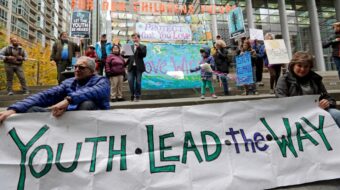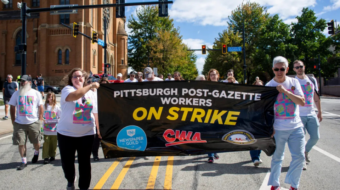Recent data show economists, not welders and machinists, need retraining
Recently, there has been growing recognition of the enormous increase in U.S. income inequality that has occurred over the last 25 years, bringing back inequality levels not seen since 1929.
This expanding recognition of the income distribution problem raises the question “what is the cause?” One short answer is changed economic power between workers and corporations. This change has affected wage bargaining and whose interests get taken into account in business and economic policy decision-making.
The power explanation stands in sharp contrast to economists’ stories about increased income inequality being due to rising returns to skill and education. What is so important about the power story is that it torpedoes the standard explanation of income distribution. And with it sinks much other economics about the adverse effects of trade unions, the idea of a natural rate of unemployment, and many claims about the benefits of globalization.
A recent research paper by Ian Dew-Becker and Robert Gordon of Northwestern University titled “Where Did the Productivity Growth Go?” reports that productivity growth has been largely captured by those in the top 1 percent of the income distribution, especially those in the top one-tenth of 1 percent. This squarely challenges the conventional wisdom that rising income inequality is due to increased economic premiums to skill and education.
Education poorly rewarded
This finding should come as no surprise. For the past two decades, the Economic Policy Institute has documented rising income inequality: hourly wages of those with less than a college degree fell between 1979 and 2003; wages of college degree holders rose by less than 1 percent a year over that period; and those of advanced degree holders grew by less than 1.1 percent per year. Consequently, the notion of enormous returns to education is a myth.
But the education story remains popular because it serves the social and political purposes of the powerful and favored. First, it implicitly blames the victims for their plight. Workers are responsible for their condition, having been too stupid or lazy to finish high school and go to college. With glib ease, Washington “suits” can then dismiss amazingly skilled welders, mechanics and blast furnace operators as unskilled.
Second, the education story allays fears about globalization and rising corporate power because these supposedly have little to do with rising inequality, which instead is attributed to skill-rewarding technological change. Third, investing in education provides a convenient solution for elite policy makers. Fourth, the education story is consistent with the dominant economic theory of income distribution, and therefore saves that theory.
Free markets don’t protect workers
That dominant theory (known as marginal productivity theory) claims that free markets ensure that workers are not exploited and are paid their contribution to production. The logic is that markets prevent exploitation, since a firm that won’t pay a worker her contribution will find that worker poached away by another firm that is willing to pay slightly more.
The education hypothesis fits neatly with this theory. The claim is that technology has increased the productivity of more educated workers, and firms operating in competitive markets have therefore increased wages of these workers.
The only problem is the facts don’t fit the theory. Returns to education have not been stellar and cannot explain the pattern of wage and income change that has occurred.
The marginal product theory of economists nonetheless appeals to the elite, being a combination of explanation and justification of income distribution. Free markets pay workers what they are worth, justifying wages and explaining them. Furthermore, free markets prevent exploitation, making unions and minimum wages unnecessary. Indeed, the theory allows the rich and powerful to claim that these essential worker protections are bad and increase unemployment by pricing workers out of jobs.
But it now has become clear that the theory does not explain the worsening of income distribution. That means another theory is needed — one that admits the role of power, institutions, and socially created perceptions of who adds value. Rather than skilled welders and machinists needing retraining, it is economists who need re-training and re-education.
Thomas Palley, a widely published economist, served as the AFL-CIO’s assistant director of public policy. This article is excerpted from The Guild Reporter (www.newsguild.org), a publication of The Newspaper Guild/CWA.









